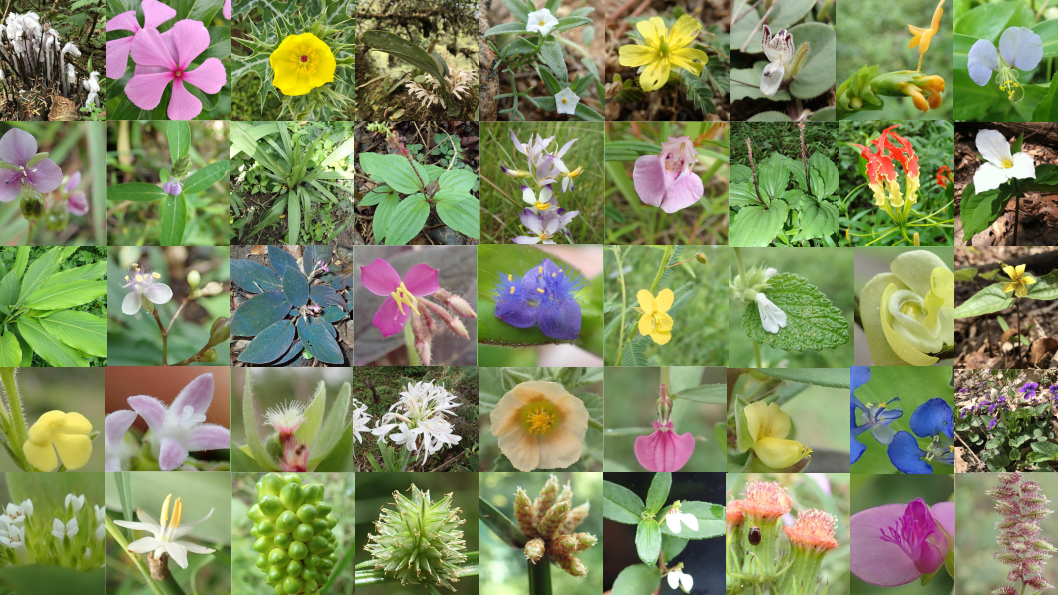
Diversity and dynamics of herbaceous plant communities in forest ecosystems
Understanding why plant and animal species occur where they do, what factors govern what species associate together into communities, and how these communities function are important questions that remain unanswered. Most studies of these questions in forests rely on information from trees, which although they make up most of the biomass may comprise less than a quarter of the plant species at any one site. Thus, our understanding of forest biology is limited because the biological patterns and processes may not be the same in all life forms. For example, herbaceous plants have varying degrees of anatomical, physiological, and competitive differences from woody plants, and often quite different life-history strategies. Given that herbs may make up more than half of all plant species on earth, this major knowledge gap severely restricts our understanding of forest biodiversity and ecosystem function.
Goals
In this workshop, we will draw together a diverse group of early and experienced researchers and experts on systematics of herbaceous plants, ecology of herbaceous plants, forest ecology, ecological sampling techniques, statistical modeling, conservation, and policy making, from a variety of institutions, regions, and countries, and working in a variety of forested ecosystems.
To allow us to prioritize fundamental and applied research questions for the diversity and dynamics of terrestrial herbaceous plants in forests, we will:
-
Determine key knowledge gaps in our understanding of the diversity and dynamics of herbs in forests,
-
Propose standardized methods that will embed inventories of terrestrial herbaceous plants within existing forest monitoring networks.
Intellectual Merit
This workshop will enable and drive forward significant advances in our fundamental understanding of the population ecology, mechanisms of coexistence, and species diversity of herbaceous plants in forested ecosystems. It will result in papers and protocol resources that will be made easily available to the scientific community, including a review of recent important research, top fundamental and applied research questions, and recommended methodologies/protocols to sample herbs at a variety of spatial and temporal scales.
The workshop will build on several prior activities, such as sourcing potential research questions from a wide field of researchers, policy makers, and conservationists; building a database of publications and data availability; as well as collating potential methods and methodological advances. The workshop will bring together scientists from various disciplines using a mixture of online, remote, and in-person activities to facilitate and encourage an inclusive and participatory workshop environment, leading to future projects and collaborations. The methods we recommend will allow many researchers to sample herbaceous plants consistently across a wide variety of forest habitats.
Broader Impacts
We will actively seek the participation of early-career investigators and members of underrepresented groups by working carefully to ensure that calls for participants are distributed widely and that workshop activities follow best practices for inclusion. Participants will be selected to cover the range of expertise required and to assemble a diverse group of participants in multiple aspects, e.g., career stage, gender, ethnicity, type of institution, and geographical region. For early-career applicants (e.g., students, postdocs) we will tailor workshop activities to advance their career goals. Including people from diverse backgrounds and levels of training will also allow early-career researchers to benefit from the network, following the model of RainFor, CTFS-ForestGEO, and others.
Dissemination of data, protocols, and resources will result in a wider network of collaborators and thereby enhance research infrastructure. To increase impact and adoption of the protocols, we will have papers and protocols translated into Spanish, Portuguese, French, Malay, Indonesian, and Mandarin. Finally, the knowledge compiled and generated from this project will have the potential to inform policy and management, e.g., by providing information on plant community responses to global change or impacts of invasive herbaceous species.
Contact
Please email us to be included on future news and updates: forestherbdiversity@gmail.com
